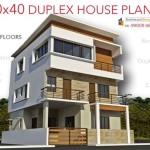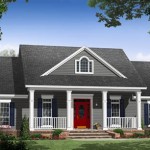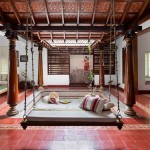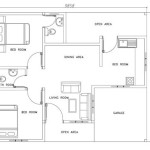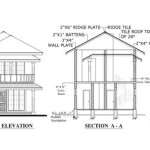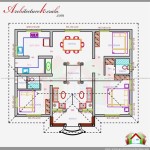Passive House Plan: A Path to Sustainable, Energy-Efficient Living
A Passive House Plan is a comprehensive design approach that prioritizes energy efficiency and sustainability in buildings. By incorporating specific construction techniques and materials, Passive House buildings achieve exceptionally low energy consumption, resulting in significant savings on utility bills and a more comfortable indoor living environment.
The Five Principles of Passive House Design
The Passive House concept adheres to five fundamental principles:
- Continuous Thermal Insulation: Minimizing heat loss through walls, floors, and roofs by using high-performance insulation materials.
- Elimination of Thermal Bridges: Preventing heat transfer between indoors and outdoors through insulated connections at structural elements.
- High-Performance Windows and Doors: Utilizing windows and doors with low U-values and air leakage rates to reduce heat loss.
- Ventilation with Heat Recovery: Ensuring continuous supply of fresh air while minimizing heat loss through a heat exchanger.
- Airtight Building Envelope: Limiting air infiltration and exfiltration through a continuous, airtight seal at the building's exterior.
Benefits of a Passive House Plan
Adopting a Passive House Plan offers numerous advantages:
- Reduced Energy Consumption: Buildings designed according to Passive House principles consume up to 90% less energy than conventional buildings.
- Lower Utility Bills: Reduced energy usage translates to substantial savings on utility bills.
- Improved Comfort: Passive House buildings maintain a constant and comfortable indoor temperature throughout the year, eliminating drafts and hot spots.
- Enhanced Air Quality: Advanced ventilation systems ensure a continuous supply of fresh air, improving indoor air quality and reducing allergens.
- Increased Durability: High-quality construction materials and techniques enhance the durability of Passive House buildings.
Essential Components of a Passive House Plan
Creating a Passive House Plan requires careful consideration of the following components:
- Insulation: High-performance insulation, such as cellulose, fiberglass, or rigid foam, is critical for minimizing heat loss.
- Windows and Doors: Energy-efficient windows and doors with low U-values and air leakage rates are essential for maintaining indoor temperature.
- Ventilation System: A heat recovery ventilation system ensures continuous airflow while minimizing heat loss.
- Airtight Building Envelope: Careful detailing and sealing of the building's shell prevents air infiltration and exfiltration.
- Thermal Modeling: Energy modeling tools are used to predict and optimize energy performance.
Conclusion
Implementing a Passive House Plan is an investment in sustainability and energy efficiency. By adhering to the fundamental principles and incorporating essential components, architects and builders can create high-performance buildings that provide a comfortable, healthy, and cost-effective living experience.

Passive House Design Fontan Architecture
What Does A Passive House Cost To Build Leanhaus

Heatspring Free Floor Plan 10 Ways Passive House Design Is Diffe Than Normal Home

Passive Design Green Home Technology Center

Passive House Design An Efficient Solution For Residential Buildings In Romania Sciencedirect

What Is Passive Design When Designing A House Windows And More

Green Passive Solar House Plans 3

Floor Plan Friday Passive House Design

An Introduction To The Flatrock Passive House Greenbuildingadvisor

Deltec Homes Renew Collection Ridgeline B 1604sf Passive Solar Layout Vaulted Ceilings High Clere House Plans Prefabricated Houses Dream

